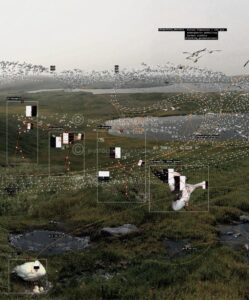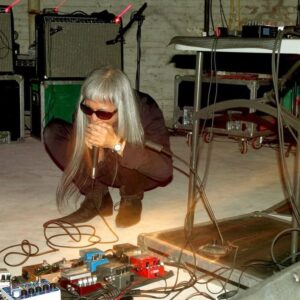Destino Interview
To speak of coated paper is to speak of thought. Or so claimed the Parisian printers of another century.
But what happens when the page is replaced by pedals? When the ink is replaced by distortion? When the only “print” left behind is the trace of feedback looping through a blood-red Boss pedal?
Keiji Haino kneels—not to pray, but to listen. His mouth swallows the microphone. His hair, like an overgrown transmission line, vibrates with the shrieks of machines too old to care. There are no lyrics. There is only presence.
He is surrounded by a battlefield of pedals—Japanese noise boxes, western fuzz, boutique delay units. It’s less a setup than a ritual. The floor is the manuscript. Each stomp a punctuation. The screech, the hiss, the breath—that’s the grammar.
We think of art as something still, composed. But Haino reminds us that some of the most essential gestures happen outside the frame, or beneath the table. That sometimes the most radical design is not Helvetica on cream cardstock—but a scream that refuses to resolve.
So what if we stopped designing clean layouts, and started composing through distortion? What if a manifesto could be feedbacked into existence?
This is not nostalgia. This is future archaeology. An archive of scraped knees and broken signals. A reminder that the most elegant typeface still needs breath to exist.
Share Post








